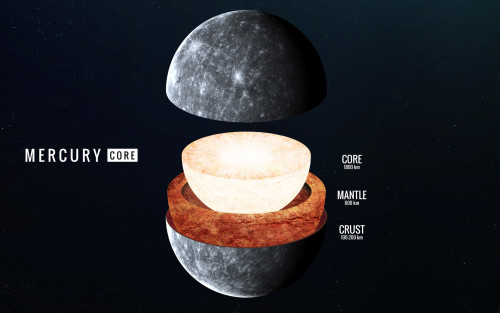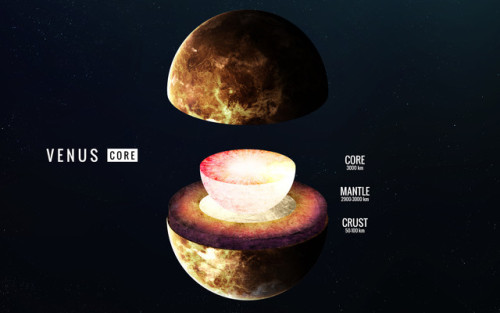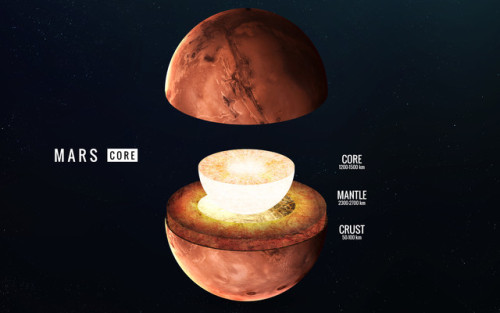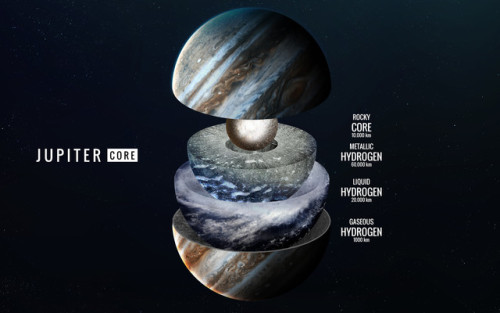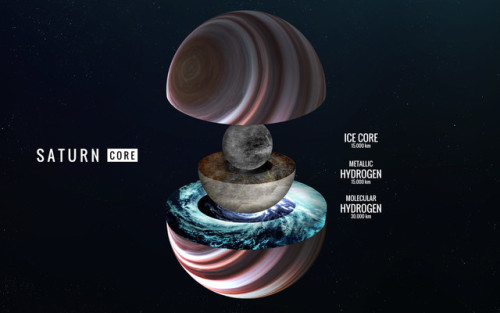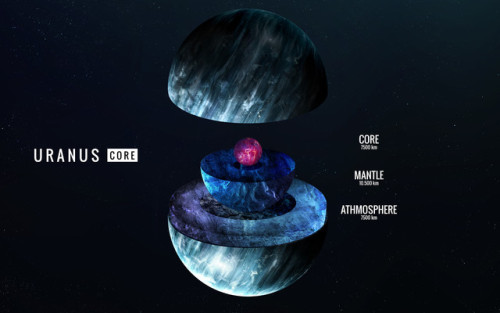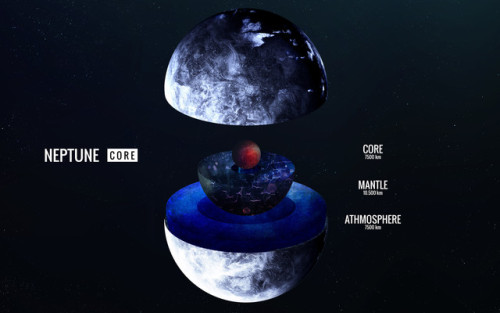Escape Velocities For Every Planet In The Solar System
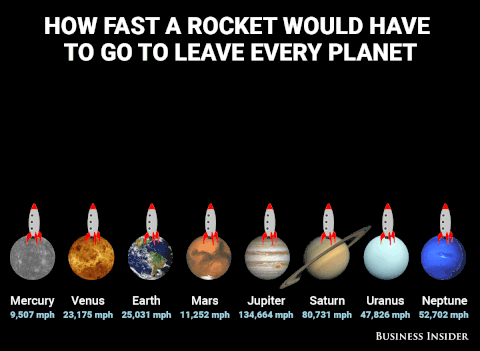
Escape velocities for every planet in the solar system
More Posts from Fillthevoid-with-space and Others
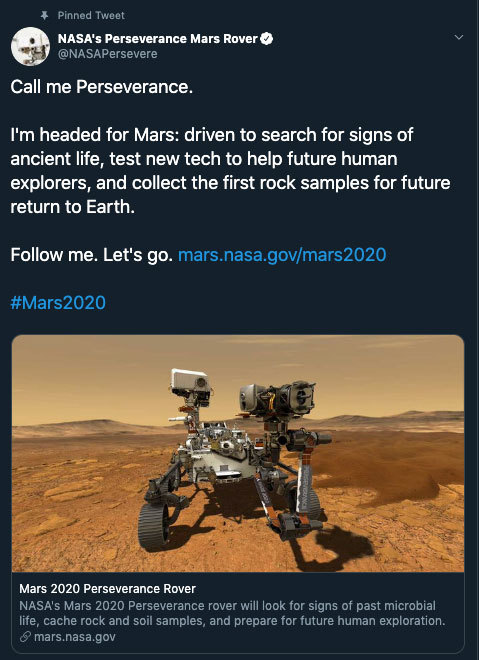
Allow us to reintroduce someone … the name’s Perseverance.
With this new name, our Mars 2020 rover has now come to life! Chosen by middle school student Alex Mather, Perseverance helps to remind ourselves that no matter what obstacles we face, whether it’s on the way to reaching our goals or on the way to Mars, we will push through. In Alex’s own words,
“We are a species of explorers, and we will meet many setbacks on the way to Mars. However, we can persevere. We, not as a nation but as humans, will not give up. The human race will always persevere into the future.”
Welcome to the family. ❤️
Make sure to follow us on Tumblr for your regular dose of space: http://nasa.tumblr.com.

Welcome to the second episode!
Below the cut are my sources, music credits, a glossary, a timeline of all the people I mention in the podcast, and the script I was working with. I’m on Twitter @HDandtheVoid if you want to tweet at me instead of tumblr-ing me!
Let me know what you think of this episode, let me know what you think I should research next*, tell me a fun space fact… any feedback is helpful!
*(My current thoughts are henges, spectroscopy dark matter, or black holes. Let me know by April 27th so I can start researching before I put up the next podcast on May 8th!)
Glossary:
astronomy - first used to describe a field of study in the 12th century, it concerns the study of objects and matter outside the earth's atmosphere, as well as their physical and chemical properties
corpuscles - any very small particles. A precursor to atoms.
cosmology—the study of the properties of our universe as a whole.
eccentric orbit - an orbit proposed by Ptolemy’s model of the universe where each planet's circular orbit is not centered on the Earth but at a point slightly away from Earth. See an example in the link.
elliptic orbit - also known as a Kepler orbit, it is an orbital system where a smaller body, like the moon or the planets, orbits a larger body like the Earth or the Sun, with the Earth or Sun at one focus of the ellipse while the other focus is empty. See an example in the link.
epicycle - a planet’s smaller orbit around a point on the larger orbiting sphere it is assigned to. See an example in the link.
Platonic Solid - a regular, 3-dimensional, convex polyhedron constructed by regular polygonal faces with the same number of faces meeting at each vertex. Only five shapes meet these criteria: tetrahedron, cube, octahedron, dodecahedron, and icosahedron. See an example in the link.
precession of the equinoxes - also called axial precession, it is a slow and continuous change in the orientation of an astronomical body's rotational axis due to gravity. On Earth, it is seen as a westward movement of the equinoxes along the ecliptic relative to the fixed stars, opposite to the yearly motion of the Sun along the ecliptic. See an example in the link.
solar system - first used in 1704, this term describes the Sun together with the group of celestial bodies that are held by its attraction and orbit around it.
Wilkinson Microwave Anisotropy Probe—a spacecraft operating from 2001 to 2010 which measured temperature differences in the cosmic microwave background radiation leftover from the Big Bang.
Script/Transcript (It’s not exactly what I said, but it’s what I was going off of. It’s conversational and it’s less rambly than what I actually said)
Timeline of people mentioned:
Claudius Ptolemy, Greek (100-170) Al-Hasan Ibn al-Haytham, Arab (965-1040) Nicolaus Copernicus, Polish (1473-1543) Tycho Brahe, Danish (1541-1601) Giordano Bruno, Italian (1548-1600) Galileo Galilei, Italian (1564-1642) Johannes Kepler, German (1571-1630) René Descartes, French (1596-1650) Sir Isaac Newton, English (1642-1726/7) Edmond Halley, English (1656-1742) Immanuel Kant, German (1724-1804) Pierre-Simon, marquis de Laplace, French (1749-1827) William Huggins, English (1824-1910) Heber Curtis, American (1872-1942) V. M. Slipher, American (1875-1969) Albert Einstein, German (1879-1955) Harlow Shapley, American (1885-1972) Edwin Hubble, American (1889-1953)
Sources:
Mars in retrograde during Tycho’s time
History of the idea of black holes
Size of the universe since 1919, presented as a teacher resource
Timeline of cosmological models
Current cosmological model
Measuring the size of our universe via NASA, with links to further universe-size resources
19th-century size of our universe debate between Shapley and Curtis
Cosmological Constant via NASA
Cosmological Constant via HubbleSite
NASA’s breakdown of the makeup of our universe
Dark Energy via NASA
Kirshner, Robert P. “Hubble’s Diagram and Cosmic Expansion.” In Proceedings of the National Academy of Sciences of the United States of America 101.1 (Jan. 6, 2004), 8-13. http://www.jstor.org/stable/3148363 [accessed 2 December 2013].
McLennan, Evan. Cosmological Evolution: Critical and Constructive. 2nd ed., Gazette-Times Press: Corvallis, OR, 1916.
Pickover, Clifford A. Archimedes to Hawking: Laws of Science and the Great Minds Behind Them. Oxford UP: NY, 2008.
Sabra, A. I. “Configuring the Universe: Aporetic, Problem Solving, and Kinemaic Modeling as Themes of Arabic Astronomy.” In Perspectives on Science 6 (1998), 288-330. Retrieved from http://www.mitpressjournals.org/loi/posc [accessed Oct. 4, 2013].
Shank, Michael H. “Setting the Stage: Galileo in Tuscany, Veneto, and Rome.” In The Church and Galileo, 57-87. Edited by Ernan McMullin. Notre Dame, IN: U of Notre Dame P, 2005.
Sharratt, Michael. Galileo: Decisive Innovator. New York: Cambridge U P, 1994.
Smith, R. W. “The Origins of the Velocity-Distance Relation.” In Journal for the History of Astronomy 10.29 (Oct 1979), 133-165.
Westfall, Richard S. Essays on the Trial of Galileo. Vatican City: Vatican Observatory Foundation, 1989.
…and class notes from a class on Ancient Astronomy I took with Prof. James Evans.
Intro Music: ‘Better Times Will Come’ by No Luck Club off their album Prosperity
Filler Music: ‘Epigram’ by Tycho off their album Dive
Outro Music: ‘Fields of Russia’ by Mutefish off their album On Draught

This episode’s been a long time coming because the topic’s come up before. I originally conceived of this podcast as a way for me to learn about space things I’d always taken for granted, and truly, there is nothing closer to home that I’ve just agreed to believe than the statement that the tides are affected by the Moon. What? How? Why? All these questions and some I didn’t even realize I had will be answered in this episode on tidal forces!
Below the cut are my standard glossary, transcript, sources, and music credits. Send me any topic suggestions via Tumblr message (you don’t need an account for it!). You can also tweet at me on Twitter at @HDandtheVoid, or you can ask me to my face if you know me. Subscribe on iTunes to get the new episodes of my maybe now monthly-updated podcast (we’ll see how the weeks unfold), and please please please rate and review it. Go ahead and tell friends if you think they’d like to hear it, too!
(My thoughts on the next episode are Stephen Hawking and his theories, or famous comets. The next episode will go up in September—ideally, September 10th!)
Glossary
barycenter - the common center of mass between two objects that allows them to orbit.
Roche limit - the distance in which a celestial body will disintegrate because of a second celestial body's tidal forces exceeding the first body's gravitational self-attraction, or the force that’s holding it together. Within the Roche limit, orbiting material disperses and forms rings, like how Saturn’s rings are within the Roche zone; outside the limit, material tends to coalesce.
spaghettification - when extreme tidal forces pull an object apart in space.
tidal force - an apparent force (sometimes also called the differential force) that stretches a body towards another, more gravitationally-strong body’s center of mass. This can cause such diverse phenomena as tides, tidal locking, breaking celestial bodies apart to form ring systems within a Roche limit, and in extreme cases, spaghettification. It arises because the gravitational force exerted on one body by another is not constant across its parts: the nearest side is attracted more strongly than the farthest side.
Types of ocean tides:
diurnal tide - a daily tidal cycle with only one high and low tide each lunar day, and a period of a little over 24 hours.
meteorological tide - a tidal change due to weather patterns. Wind, or unusually high or low barometric pressure causes variations between the actual sea level and its predicted height.
mixed tide - a daily tidal cycle with two high and low tides that differ in their peaks. This difference in height between successive high or low tides is called the diurnal inequality. They have a period of 12 hours and 25 minutes.
neap tide - a type of bi-monthly tidal cycle that occurs when the Sun, Earth, and Moon are positioned at a 90-degree angle, so the tidal forces of the Sun are acting against the tidal forces of the Moon. During a neap tide, the difference between high tide and low tide is the least extreme.
semidiurnal tide - a daily tidal cycle with two nearly equal high tides and low tides every lunar day. They have a period of 12 hours and 25 minutes.
spring tide - a type of bi-monthly tidal cycle that occurs when the Sun, Earth, and Moon line up so that the gravitational forces of Sun and Moon are working together to form a large tidal bulge. During a spring tide, the difference between high tide and low tide is at its maximum.
tidal locking - when long-term interaction between two co-orbiting astronomical bodies causes at least one of the bodies to rotate in such a way that one face of the body is always pointed at the body it’s orbiting. This is also called gravitational locking or captured rotation. An example is that the same side of the Moon always faces the Earth, and its synchronous rotation means that it takes just as long to rotate around its own axis as it does to revolve around the Earth.
Script/Transcript
Sources
Tidal Cycles in Tides Explained via beltoforian.de
“a tide is a distortion in the shape of one body induced by the gravitational pull of another nearby object.”
Meteorological effects on tides via the New Zealand Government website
Tides and Water Levels via the National Oceanic and Atmospheric Administration (NOAA)
Tides by R. Nave, my dude, my guy, my friend and yours, of Georgia State University
The Tidal Force by Neil deGrasse Tyson via Hayden Planetarium (Nov 1995)
“A mild increase in distance between two objects can make a large difference in the strength of the tidal force. For example, if the Moon were just twice its current distance from us, then its tidal force on Earth would decrease by a factor of eight. At its current average distance of 240,000 miles from Earth, the Moon manages to create sizable atmospheric, oceanic, and crustal tides by attracting the part of Earth nearest the Moon more strongly than the part of Earth that is farthest. (The Sun is so far away that in spite of its generally strong gravity, its tidal force on Earth amounts to less than half that of the Moon.) The oceans respond most visibly in being stretched toward the direction of the Moon.”
“When Earth's rotation slows down until it exactly matches the orbital period of the Moon, then Earth will no longer be rotating within its oceanic tidal bulge and the Earth-Moon system will have achieved a double tidal lock. In what sounds like an undiscovered wrestling hold, double tidal locks are energetically favorable (like a ball coming to rest at the bottom of a hill), and are thus common in the universe.”
Forget “Earth-Like”—We’ll First Find Aliens on Eyeball Planets via Nautilus (Feb 2015)
High Tide on Io! via NASA (Mar 2012)
Tidal forces and spaghettification via NASA handout
Spaghettification via Cosmic Funnies
Single atoms feel tidal force via Physics World (May 2017)
Robbins, Tom. Still Life with Woodpecker. Bantam Books: New York, 1980.
“Being four times larger than the moon, the earth appeared to dominate. Caught in the earth’s gravitational web, the moon moved around the earth and could never get away. Yet, as any half-awake materialist well knows, that which you hold holds you.”
Sobel, Dava. The Planets. Viking: NY, 2005.
Intro Music: ‘Better Times Will Come’ by No Luck Club off their album Prosperity
Background Music: ‘Sad Business’ by Patients aka Ben Cooper, who primarily releases music as Radical Face but also has at least three other bands or band names he’s working with/has released music as.
Filler Music: ‘It’s Getting Boring by the Sea’ by Blood Red Shoes off their album Box of Secrets
Outro Music: ‘Fields of Russia’ by Mutefish off their album On Draught
Comet That Took a Century to Confirm Passes by Earth
NASA Goddard Space Flight Center logo. March 31, 2017 On April 1, 2017, comet 41P will pass closer than it normally does to Earth, giving observers with binoculars or a telescope a special viewing opportunity. Comet hunters in the Northern Hemisphere should look for it near the constellations Draco and Ursa Major, which the Big Dipper is part of. Whether a comet will put on a good show for observers is notoriously difficult to predict, but 41P has a history of outbursts, and put on quite a display in 1973. If the comet experiences similar outbursts this time, there’s a chance it could become bright enough to see with the naked eye. The comet is expected to reach perihelion, or its closest approach to the sun, on April 12.
Image above: In this image taken March 24, 2017, comet 41P/Tuttle-Giacobini-Kresák is shown moving through a field of faint galaxies in the bowl of the Big Dipper. On April 1, the comet will pass by Earth at a distance of about 13 million miles (0.14 astronomical units), or 55 times the distance from Earth to the moon; that is a much closer approach than usual for this Jupiter-family comet. Image Credits: image copyright Chris Schur, used with permission. Officially named 41P/Tuttle-Giacobini-Kresák to honor its three discoverers, the comet is being playfully called the April Fool’s Day comet on this pass. Discovery credit goes first to Horace Tuttle, who spotted the comet in 1858. According to the Cometography website, 41P was recognized at the time as a periodic comet — one that orbits the sun — but astronomers initially were uncertain how long the comet needed to make the trip. The comet was rediscovered in 1907 by Michael Giacobini but not immediately linked to the object seen in 1858. Later, the astronomer Andrew Crommelin determined that the two observations had been of the same object and predicted that the comet would return in 1928 and 1934, according to the Cometography entry for the comet. However, the object was not seen then and was considered lost. In 1951, L’ubor Kresák discovered it again and tied it to the earlier observations. A member of the Jupiter family of comets, 41P makes a trip around the sun every 5.4 years, coming relatively close to Earth on some of those trips. On this approach, the comet will pass our planet at a distance of about 13 million miles (0.14 astronomical units), or about 55 times the distance from Earth to the moon. This is the comet’s closest approach to Earth in more than 50 years and perhaps more than a century. For scientists, 41P’s visit is an opportunity to fill in details about the comet’s composition, coma and nucleus.
Image above: An artist’s illustration of a group of comet enthusiasts. Image Credits: NASA’s Goddard Space Flight Center. “An important aspect of Jupiter-family comets is that fewer of them have been studied, especially in terms of the composition of ices in their nuclei, compared with comets from the Oort cloud,” said Michael DiSanti of NASA’s Goddard Space Flight Center in Greenbelt, Maryland. He and his team will be observing 41P on April 1 using NASA’s Infrared Telescope Facility in Hawaii. Astronomers will try to determine characteristics such as how quickly 41P’s nucleus rotates, which provides clues about how structurally sound the nucleus is, and whether any changes can be documented in the coma and tail. Observers also will look for outbursts, which are an indication of how active a comet is. By cataloging the subtle, and sometimes not-so-subtle, differences among comets, researchers can construct a family tree and trace the history of how and where these objects formed as the solar system was taking shape. “Comets are remnants from the early solar system,” said DiSanti. “Each comet that comes into the neighborhood of Earth gives us a chance to add to our understanding of the events that led to the formation of our own planet.” Related links: Comets: http://www.nasa.gov/comets Goddard Space Flight Center: https://www.nasa.gov/centers/goddard/home/index.html Images (mentioned), Text, Credits: NASA’s Goddard Space Flight Center, by Elizabeth Zubritsky/Rob Garner. Greetings, Orbiter.ch Full article

Margaret Hamilton is a computer scientist and mathematician. She was the lead software engineer for Project Apollo. Her work prevented an abort of the Apollo 11 moon landing. She’s also credited for coining the term “software engineer."










Black Holes Are Real And Spectacular, And So Are Their Event Horizons
“Originally estimated to be slightly larger than its M87 counterpart, the black hole at the center of the Milky Way — known as Sagittarius A* — has not yet had its event horizon imaged. When you observe the Universe, you don’t always get what you expect; sometimes, you get what it gives you. Instead, it was M87’s black hole that came through first, which was a much brighter and a much cleaner signal.
What we’ve found is spectacular. Those dark pixels at the center of the image are actually the silhouette of the event horizon itself. The light that we observe comes from the accelerated, heated matter around it, which must emit electromagnetic radiation. Where the matter exists, it emits radio waves, and the dark circle we see is where the background radio waves are blocked by the event horizon itself.”
We have an event horizon, folks! It wasn’t the one at the center of our galaxy that came through first, but rather the one at the center of Messier 87: a black hole over 1,000 times more massive, but some 2,000 times farther away, than the one contained in the Milky Way. This is an ultramassive black hole that’s almost the size of the entire Solar System, and its event horizon is real.
Come get the full story on what we know, now that we have our image, about black holes in the aftermath of the Event Horizon Telescope!

The Elephants Trunk in IC 1396 : Like an illustration in a galactic Just So Story, the Elephants Trunk Nebula winds through the emission nebula and young star cluster complex IC 1396, in the high and far off constellation of Cepheus. Of course, the cosmic elephants trunk is over 20 light-years long. This composite was recorded through narrow band filters that transmit the light from ionized hydrogen, sulfur, and oxygen atoms in the region. The resulting image highlights the bright swept-back ridges that outline pockets of cool interstellar dust and gas. Such embedded, dark, tendril-shaped clouds contain the raw material for star formation and hide protostars within the obscuring cosmic dust. Nearly 3,000 light-years distant, the relatively faint IC 1396 complex covers a large region on the sky, spanning over 5 degrees. via NASA
js

Scientists Discover The Oldest, Largest Body Of Water In Existence–In Space
Scientists have found the biggest and oldest reservoir of water ever–so large and so old, it’s almost impossible to describe.
The water is out in space, a place we used to think of as desolate and desert dry, but it’s turning out to be pretty lush.
Researchers found a lake of water so large that it could provide each person on Earth an entire planet’s worth of water–20,000 times over. Yes, so much water out there in space that it could supply each one of us all the water on Earth–Niagara Falls, the Pacific Ocean, the polar ice caps, the puddle in the bottom of the canoe you forgot to flip over–20,000 times over.
The water is in a cloud around a huge black hole that is in the process of sucking in matter and spraying out energy (such an active black hole is called a quasar), and the waves of energy the black hole releases make water by literally knocking hydrogen and oxygen atoms together.
The official NASA news release describes the amount of water as “140 trillion times all the water in the world’s oceans,“ which isn’t particularly helpful, except if you think about it like this.
That one cloud of newly discovered space water vapor could supply 140 trillion planets that are just as wet as Earth is.
Mind you, our own galaxy, the Milky Way, has about 400 billion stars, so if every one of those stars has 10 planets, each as wet as Earth, that’s only 4 trillion planets worth of water.
The new cloud of water is enough to supply 28 galaxies with water.
Truly, that is one swampy patch of intergalactic space.
Equally stunning is the age of the water factory. The two teams of astrophysicists that found the quasar were looking out in space a distance of 12 billion light years. That means they were also looking back in time 12 billion years, to when the universe itself was just 1.6 billion years old. They were watching water being formed at the very start of the known universe, which is to say, water was one of the first substances formed, created in galactic volumes from the earliest time. Given water’s creative power to shape geology, climate and biology, that’s dramatic.
“It’s another demonstration that water is pervasive throughout the universe, even at the very earliest times,” says Matt Bradford, an astrophysicist at NASA’s Jet Propulsion Laboratory and leader of one of the teams that made the discovery. (The journal article reporting the discovery is titled, without drama, “The Water Vapor Spectrum of APM 08279+5255: X-Ray Heating and Infrared Pumping over Hundreds of Parsecs.”)
It is not as if you’d have to wear foul-weather gear if you could visit this place in space, however. The distances are as mind-bogglingly large as the amount of water being created, so the water vapor is the finest mist–300 trillion times less dense than the air in a typical room.
And it’s not as if this intergalactic water can be of any use to us here on Earth, of course, at least not in the immediate sense. Indeed, the discovery comes as a devastating drought across eastern Africa is endangering the lives of 10 million people in Somalia, Kenya, and Ethiopia. NASA’s water discovery should be a reminder that if we have the sophistication to discover galaxies full of water 12 billion light years away, we should be able to save people just an ocean away from drought-induced starvation.
The NASA announcement is also a reminder how quickly our understanding of the universe is evolving and how much capacity for surprise nature still has for us. There’s water on Mars, there’s water jetting hundreds of miles into space from Enceladus, one of Saturn’s moons, there are icebergs of water hidden in the polar craters of our own Moon. And now it turns out that a single quasar has the ability to manufacture galaxies full of water.
But it was only 40 years ago, in 1969, that scientists first confirmed that water existed anywhere besides Earth.
I’m thinking of how to structure this whole podcast dealie so it’s more interactive, and what I’ve come up with is presenting a choice at the end of each episode of what people want to hear about next. Like a choose-your-own-adventure, except the adventure is me doing more research on a topic that I mentioned in the current podcast. I will retain veto power because there are some things I DEFINITELY want to cover, but it would be a cool way to see what other people are interested in with regards to space, to history, to technology, or to people!
-
 hey-its-cweepy reblogged this · 2 months ago
hey-its-cweepy reblogged this · 2 months ago -
 queenticklusselena liked this · 2 months ago
queenticklusselena liked this · 2 months ago -
 pudl-e liked this · 2 months ago
pudl-e liked this · 2 months ago -
 not-a-bot-just-an-introvert-fan liked this · 3 months ago
not-a-bot-just-an-introvert-fan liked this · 3 months ago -
 resplendentmackerelsky liked this · 3 months ago
resplendentmackerelsky liked this · 3 months ago -
 m0ose-idiot reblogged this · 3 months ago
m0ose-idiot reblogged this · 3 months ago -
 gheycowboyespressokell liked this · 3 months ago
gheycowboyespressokell liked this · 3 months ago -
 earlobe-collector liked this · 3 months ago
earlobe-collector liked this · 3 months ago -
 gooseygooseyartstuff liked this · 3 months ago
gooseygooseyartstuff liked this · 3 months ago -
 wyrmcat reblogged this · 3 months ago
wyrmcat reblogged this · 3 months ago -
 wyrmcat liked this · 3 months ago
wyrmcat liked this · 3 months ago -
 autism-georg reblogged this · 3 months ago
autism-georg reblogged this · 3 months ago -
 iamsigningmylifeaway liked this · 3 months ago
iamsigningmylifeaway liked this · 3 months ago -
 3e3a33 reblogged this · 3 months ago
3e3a33 reblogged this · 3 months ago -
 plaid-dragon reblogged this · 3 months ago
plaid-dragon reblogged this · 3 months ago -
 plaid-dragon liked this · 3 months ago
plaid-dragon liked this · 3 months ago -
 sexyskeksis liked this · 3 months ago
sexyskeksis liked this · 3 months ago -
 kindofadyke liked this · 3 months ago
kindofadyke liked this · 3 months ago -
 lillylikescats reblogged this · 3 months ago
lillylikescats reblogged this · 3 months ago -
 lillylikescats liked this · 3 months ago
lillylikescats liked this · 3 months ago -
 friendlypastafriend reblogged this · 3 months ago
friendlypastafriend reblogged this · 3 months ago -
 thatforestprince liked this · 3 months ago
thatforestprince liked this · 3 months ago -
 shrimply-irresistible reblogged this · 3 months ago
shrimply-irresistible reblogged this · 3 months ago -
 idontknowknit reblogged this · 3 months ago
idontknowknit reblogged this · 3 months ago -
 hookedatweiss liked this · 3 months ago
hookedatweiss liked this · 3 months ago -
 drizzlegd liked this · 3 months ago
drizzlegd liked this · 3 months ago -
 wow-kitten liked this · 3 months ago
wow-kitten liked this · 3 months ago -
 periidote reblogged this · 3 months ago
periidote reblogged this · 3 months ago -
 princeof-flowers reblogged this · 3 months ago
princeof-flowers reblogged this · 3 months ago -
 omskivar reblogged this · 3 months ago
omskivar reblogged this · 3 months ago -
 omskivar liked this · 3 months ago
omskivar liked this · 3 months ago -
 blinloo liked this · 3 months ago
blinloo liked this · 3 months ago -
 anarchy-in-new-vegas reblogged this · 3 months ago
anarchy-in-new-vegas reblogged this · 3 months ago -
 anarchy-in-new-vegas liked this · 3 months ago
anarchy-in-new-vegas liked this · 3 months ago -
 miniar liked this · 3 months ago
miniar liked this · 3 months ago -
 call0fcthuwu reblogged this · 3 months ago
call0fcthuwu reblogged this · 3 months ago -
 call0fcthuwu liked this · 3 months ago
call0fcthuwu liked this · 3 months ago -
 acidmatze reblogged this · 3 months ago
acidmatze reblogged this · 3 months ago -
 the-perks-of-neurodivergency reblogged this · 3 months ago
the-perks-of-neurodivergency reblogged this · 3 months ago -
 spoonietimelordy liked this · 3 months ago
spoonietimelordy liked this · 3 months ago -
 the-perks-of-neurodivergency reblogged this · 3 months ago
the-perks-of-neurodivergency reblogged this · 3 months ago -
 theonethatshowsupinyournotes reblogged this · 3 months ago
theonethatshowsupinyournotes reblogged this · 3 months ago -
 theonethatshowsupinyournotes liked this · 3 months ago
theonethatshowsupinyournotes liked this · 3 months ago -
 the-perks-of-neurodivergency liked this · 3 months ago
the-perks-of-neurodivergency liked this · 3 months ago -
 qupritsuvwix reblogged this · 3 months ago
qupritsuvwix reblogged this · 3 months ago -
 qupritsuvwix liked this · 3 months ago
qupritsuvwix liked this · 3 months ago -
 lava-bite liked this · 3 months ago
lava-bite liked this · 3 months ago -
 ro2a1yn reblogged this · 3 months ago
ro2a1yn reblogged this · 3 months ago -
 technicallypsychicballoon reblogged this · 3 months ago
technicallypsychicballoon reblogged this · 3 months ago
A podcast project to fill the space in my heart and my time that used to be filled with academic research. In 2018, that space gets filled with... MORE SPACE! Cheerfully researched, painstakingly edited, informal as hell, definitely worth everyone's time.
243 posts
